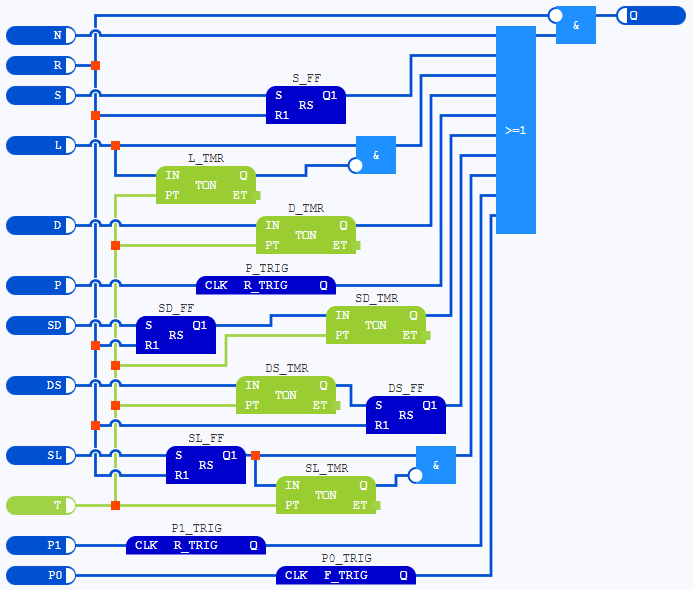Behavior of the action qualifiers for SFC elements
As noted in the article "Evaluating SFC elements", the statements of an →action can only be evaluated and executed, if the internal output variable action_ACB.Q is set to the value TRUE. The behavior, whether and when the internal output variable action_ACB.Q is set to the value TRUE, is determined by the internal input variables action_ACB.action-qualifier and action_ACB.T in turn.
The following illustrations on the action qualifiers inform on this behavior in detail. Or see "Illustration of default behavior", if you are interested in the FBD-logic equivalent to this behavior.
Note the following hints in order to comprehend the behavior in the illustrations even better:
The internal input variable action_ACB.action-qualifier is set to the value TRUE, when the action (or action block) is associated to a step and this step is active.
The following illustrations only contain the name of the action qualifier (e.g. N, R, S) instead of the complete name action_ACB.action-qualifier.In order to simplify the association of action_ACB.Q to the respective action qualifier, the following illustrations contain the name action-qualifier.Q (e.g. N.Q, S.Q).
The internal input variable action_ACB.T contains the value of the duration literal that must be specified together with certain action qualifiers.
The following illustrations identify this value as T.The action qualifier R has always priority. The combination of R with a different action qualifier (e.g. N) results in the behavior for action_ACB.Q as depicted in the following illustrations.
If several action qualifiers with a duration literal blocks (= L, D, SD, DS, SL, PN) are used for the association of the same action or for several action blocks and the corresponding steps are active at the same time, none of the actions or action blocks are executed.
If you are using several action qualifiers of the other ones (= N, S, P, P0, P1) for the association of the same action or for several action blocks (e.g. P0 and P1), their behavior is processed with OR-logic.
The illustrations of this article:
Action qualifier N
N.Q = TRUE, as long as N = TRUE and R = FALSE
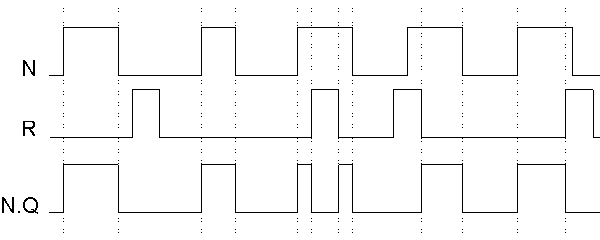
Action qualifier S
S.Q = TRUE, after S = TRUE (will be stored) and as long as R = FALSE
In contrast to N: S.Q changes to FALSE, only if R changes to TRUE.
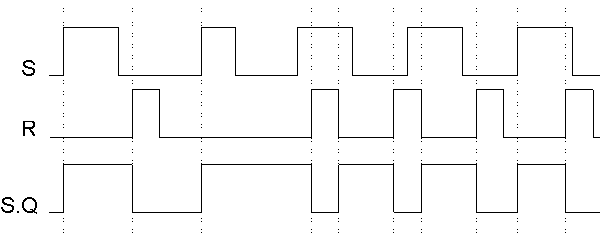
Action qualifier L
L.Q = TRUE, such as N (as long as L = TRUE and R = FALSE), but limited to the specified time T
The time T starts, when L changes to TRUE (= in case of rising edge). The time T does not change because of R.
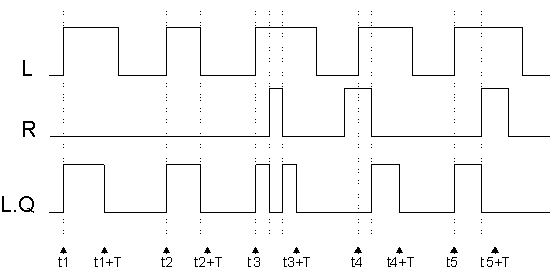
Action qualifier D
D.Q = TRUE after the specified time T and if D = TRUE and R = FALSE
The time T starts, when D changes to TRUE (= in case of rising edge). The time T does not change because of R.
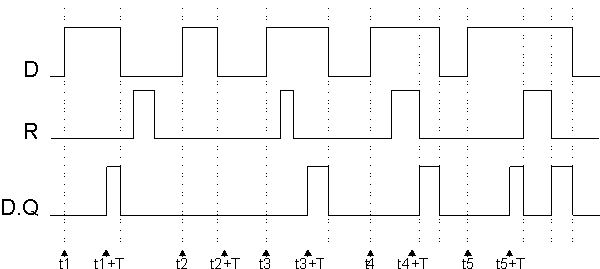
Action qualifier P
P.Q = TRUE (for 1 cycle), when P changes to TRUE (= in case of rising edge) and if R = FALSE
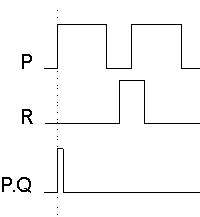 , meaning
, meaning ![]() = TRUE for 1 cycle
= TRUE for 1 cycle
Action qualifier SD
combination of S and downstream D, meaning that the first condition is processed at first and only then the second condition is processed. Hence: SD.Q = TRUE,
after SD = TRUE (will be stored),
after the specified time T,
as long as R = FALSE
The time T starts, when SD changes to TRUE (= in case of rising edge of SD; see e.g. t1) or when R changes to FALSE (= in case of falling edge of R; see t4 and t7).
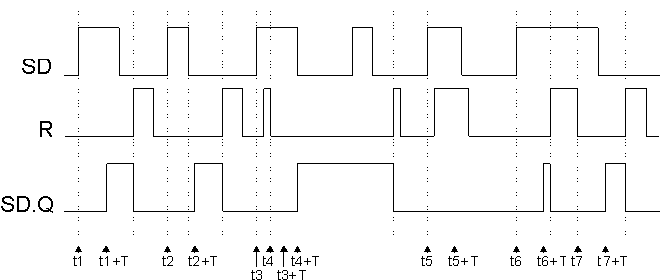
Action qualifier DS
combination of D (without processing R) and downstream S, meaning that the first condition is processed at first and only then the second condition is processed. Hence:
after the specified time T,
until the time T no interruptions of DS = TRUE (will be stored),
as long as R = FALSE
The time T starts, when DS changes to TRUE (= in case of rising edge of DS; see e.g. t1). The time T does not change because of R.
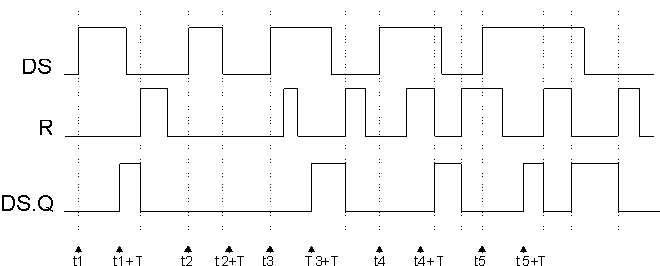
Action qualifier SL
combination of S and downstream L, meaning that the first condition is processed at first and only then the second condition is processed. Hence: SL.Q = TRUE,
after SL = TRUE (will be stored,
limied to the specified time T,
as long as R = FALSE
The time T starts, when SL changes to TRUE (= in case of rising edge of SL; see e.g. t1) or when R changes to FALSE (= in case of falling edge of R; see t4 and t5).
A rising edge of SL is ignored, if there has been no R = FALSE since the last SL = TRUE (see t5+T until t6).

Action qualifier P0
P0.Q = TRUE (for 1 cycle), if P0 changes to FALSE (= in case of falling edge) and if R = FALSE
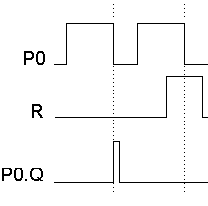 , meaning
, meaning ![]() = TRUE for 1 cycle
= TRUE for 1 cycle
Action qualifier P1
such as P: P1.Q = TRUE (for 1 cycle), when P1 changes to TRUE (= in case of rising edge) and if R = FALSE
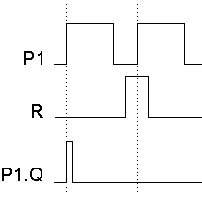 , meaning
, meaning ![]() = TRUE for 1 cycle
= TRUE for 1 cycle
Action qualifier PN
PN.Q = TRUE, such as N (as long as PN = TRUE and R = FALSE), but at least for the specified time T
The time T starts, when PN changes to TRUE (= in case of rising edge). The time T does not change because of R.
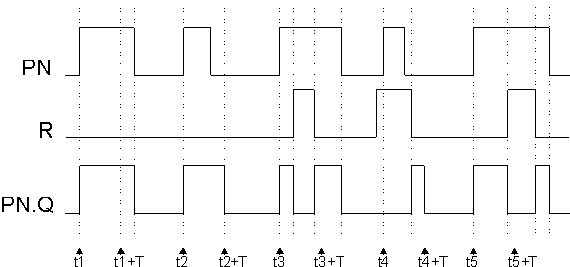
Enhancement to IEC-standard
PN is an enhancement for the →IEC-standard.
